Start typing

- Trade Management
- International Trade Finance
- Market Entry Strategies
- Marketing & Sales
- Research & Development
- Supply Chain Management
- CITP® |FIBP® Spotlight
- Import Export Jobs
- International Trade Courses
- International Trade Workshops
- International Trade Certification
- International Trade Resources
- FITTskills Lite Downloads
- FITT Small Business Guide: The Scaling Up Edition
Trending topics:
- Procurement
- CITP®|FIBP® designation

A Guide to Preparing an International Business Plan
By: FITT Team

An international business plan acts as a framework that identifies goals and objectives, specific target markets and clients, resources required and strategies to be developed in pursuit of international business opportunities. The plan allows for the monitoring of progress via metrics against which success and failure can be measured. A comprehensive international business plan will be comprised of a number of integrated strategies related to business functions, including communications, sales and marketing, finance and production.
What Is an International Business Plan?
An international business plan is a valuable management tool that describes who a business is, what it plans to achieve and how it plans to overcome risks and provide anticipated returns. It can be used for a wide variety of purposes, such as to:
- Set goals and objectives for the organization’s performance.
- Provide a basis for evaluating and controlling the organization’s performance.
- Communicate an organization’s message to managers and staff, outside directors, suppliers, lenders and potential investors.
- Help the planner identify the cash needs of the business.
- Provide benchmarks against which to compare the progress and performance of the business over time.
A comprehensive and detailed plan forces the planner to look at an organization’s operations and re-evaluate the assumptions on which the business was founded. In doing so, strengths and weaknesses can be identified.
Although highly dependent on the individual business case, on average it takes a three-year commitment to establish a successful presence in a foreign market. This process may require tremendous human, technical and financial resources during the developmental period.

The Planning Process
An international business plan is subject to repeated adjustment and revision to keep it current with the changing circumstances of the organization. The plan is a feedback mechanism through which new information is continually incorporated into the organization’s operations. Planning always precedes action. Therefore, planning must be thought of as a continuous cycle. The analytical tools presented here are not intended to be used just once. If they are to be useful, they should be used repeatedly as part of a process of improvement and incremental adjustment.
Plan Preparation Guidelines
These 7 guidelines will help in preparing a comprehensive international business plan:
- Clearly define the objectives for producing the plan : Who is going to read the plan, and what will they need to do? These objectives can help you decide how much emphasis to put on various sections.
- Allocate sufficient time and resources to thoroughly research the plan : A plan is only as good as the research that went into producing it.
- Show drafts of the plan to others : It can be very useful to obtain feedback from others, both inside and outside the business.
- Create an original plan that is done specifically for each business case : A common mistake entrepreneurs make is to borrow heavily from a sample plan and simply change the names and some of the numbers. There are two big problems with this approach. First , the emphasis placed on various sections of the plan must reflect what is important to the particular business in question. Second , a good plan should flow like a story, with the sections working together to demonstrate why the business will succeed. Plans that borrow too heavily from other plans tend to be disjointed, with some sections contradicting others and various key issues left unaddressed.
- Outline the key points in each section before the writing starts : These points must then be reviewed to ensure the sections are consistent with each other, there is little duplication and all key issues have been addressed.
- Ensure financial projections are believable : For many readers, the financial section is the most important part of the plan because it identifies the financing needs and shows the profit potential of the business. In addition, a good financial plan will give the reader confidence that the author really understands the business.
- Consider writing the executive summary as the last step in the process: It is usually easier to provide a concise overview after the detailed content has been created.
If you’re having trouble getting started with your business plan, try writing like it’s a series of tweets—one for every section of your business plan. To get your point across, 140 characters is all you need.
Forcing yourself to boil each section of your business plan down to one main point is an exercise in decision making and strategy all in itself. When you’re done, you’ll have everything you need to take your next step, whether that’s practicing your pitch to potential investors or a business partner, or sitting down to expand each tweet into a full section of a more traditional business plan.
Core Content
The international business plan is the culmination of all of the work done to determine the appropriate venture for the organization’s growth. As part of the feasibility process, the organization will have determined its own internal readiness, conducted comprehensive target market research and carefully analyzed any relevant risks.
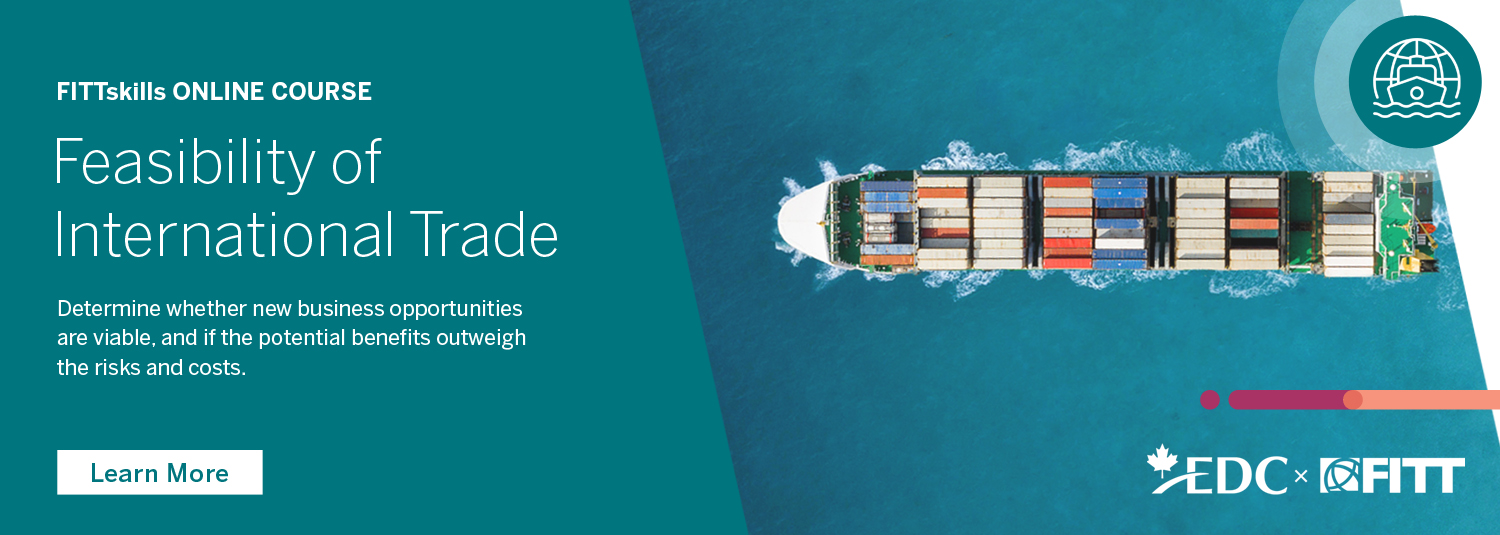
At this point, the organization can take all of this information and analysis and formally document the plan for moving forward. There are many different models and examples of how to put together a formal business plan, rather than one correct way.
The right format will depend on the organization, the venture being pursued and who will be accessing the business plan and for what purpose. However, there are some basic guidelines to follow.
One of the reasons business plans are developed is to convince investors and/or bankers to invest in the venture.
Increasingly, they are looking for a business plan to include two sections: one relating to online strategy (in terms of e-marketing, social media and ROI) and the second relating to corporate social responsibility (including quality, health, safety and environment policies).
The inclusion of these topics gives more credibility to the company by demonstrating its commitment to the community and to employees’ well-being.
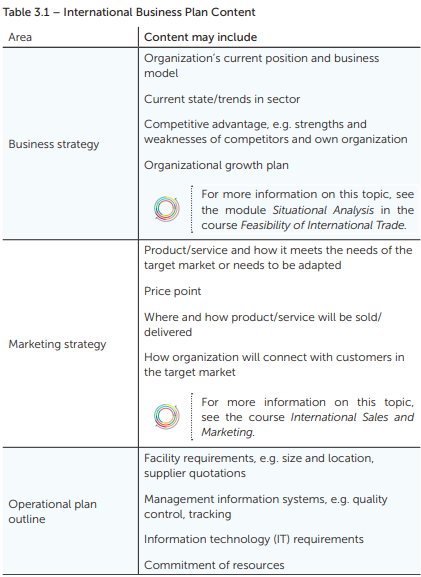
Telling a Story
One trend in business planning is to use a narrative structure in the document, rather than traditional technical writing techniques. Storytelling techniques are increasingly being used throughout the business world to create personal and organizational brands, deliver marketing messages and develop persuasive plans.
Stories make presentations better. Stories make ideas stick. Stories help us persuade. Savvy leaders tell stories to inspire us, motivate us. That’s why so many politicians tell stories in their speeches. They realize that “what you say” is often moot compared to “how you say it.
Instead of using bulleted points and cold, technical language, organizations employ a “beginning, middle and end” narrative style. This engages the audience by establishing the context, describing the conflict or obstacles and arriving at a successful resolution.
The Executive Summary
Usually the last step of preparing the international business plan is to develop the executive summary, a short overview of what the plan proposes to accomplish. For some purposes, a one-page business plan can also be useful.
There is not a great deal of difference between an executive summary and a one-page business plan. The most significant distinction is the one-page plan must completely fit on one page in a readable font, while an executive summary may spread over two or three pages.
One-Page Business Plan
There is a trend towards the one-page business plan, especially if the plan is to be presented to potential partners for their consideration. Audiences for the one-page plan will be looking for a “quick hit”: a clear and concise description of what the opportunity is and how it is being pursued.
For example, a one-page business plan might include the following topics, as described in Noah Parson’s article “How to Write a One-Page Business Plan” on the website Bplans :
- Customer problem/opportunity
- Your solution/approach
- Business model (how you make money)
- Target market (who is the customer and how many are there)
- Competitive advantage
- Management team
- Financial summary
- Funding required
The one-page plan (or the executive summary, if used in place of the one-page plan) may provide the first impression the audience has of the business. This is the most important document generated out of the business planning process, and significant effort and care should be taken in its creation.
There are many websites the provide blank samples of one-page business plans, including Bplans , the GoForth Institute and Startup.com.
A Note on Strategic Plans
A strategic plan covers many of the same points as a business plan. However, a strategic plan sets out the detailed action plan to be followed to achieve the objectives of the international business plan.
It must outline specific activities, their due dates and who is responsible for each activity. It is a project plan with a critical path. A strategic plan ensures any venture is carried out in a coordinated, informed and systematic way.
A key consideration in action planning is how quickly to enter the market, which is driven by the chosen market entry strategy. If market entry is done too quickly, the potential for costly mistakes increases. However, if it is completed too slowly, opportunities may be missed and competitors will have more time to react.
The Planning Cycle
Attaching the word “cycle” to planning implies that it happens more than once. International business plans need to be reviewed periodically because new information that has an impact on both planning and operations is continually coming in.
All plans, including international business plans and strategic plans, need to be reviewed every time there is a major event impacting the business, such as civil unrest, a currency fluctuation or the presence of a new competitor.
About the author
Author: FITT Team
The Forum for International Trade Training (FITT) is the standards, certification and training body dedicated to providing international business training, resources and professional certification to individuals and businesses. Created by business for business, FITT’s international business training solutions are the standard of excellence for global trade professionals around the world. View all posts by FITT Team
Related stories
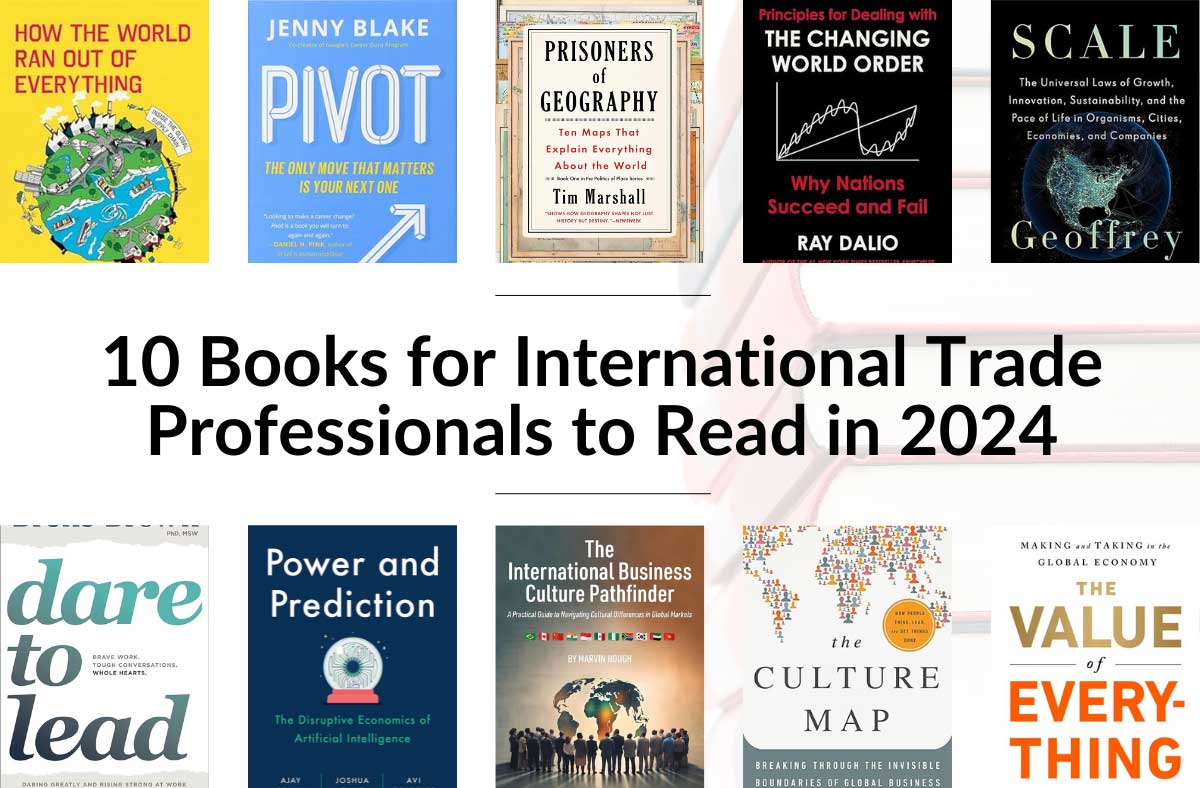
Top 10 books for international trade professionals to read in 2024

4 ways to visualize data more effectively for reports and presentations

3 common mistakes that cause international businesses to fail – and how to avoid them

Top 10 fastest growing international trade jobs in 2023
Disqus comments, leave a reply cancel reply.
Your email address will not be published. Required fields are marked *
Save my name, email, and website in this browser for the next time I comment.
2 thoughts on “A Guide to Preparing an International Business Plan”
Thank for international businesses
I have a company in Dubai and I am looking for someone who can write an internationally designed business plan with me for investors. Do you have an address I can contact?
Subscribe to our mailing list
Email address:
- Credit cards
- View all credit cards
- Banking guide
- Loans guide
- Insurance guide
- Personal finance
- View all personal finance
- Small business
- Small business guide
- View all taxes
You’re our first priority. Every time.
We believe everyone should be able to make financial decisions with confidence. And while our site doesn’t feature every company or financial product available on the market, we’re proud that the guidance we offer, the information we provide and the tools we create are objective, independent, straightforward — and free.
So how do we make money? Our partners compensate us. This may influence which products we review and write about (and where those products appear on the site), but it in no way affects our recommendations or advice, which are grounded in thousands of hours of research. Our partners cannot pay us to guarantee favorable reviews of their products or services. Here is a list of our partners .
How to Start an Import/Export Business in 6 Steps

Many or all of the products featured here are from our partners who compensate us. This influences which products we write about and where and how the product appears on a page. However, this does not influence our evaluations. Our opinions are our own. Here is a list of our partners and here's how we make money .
For nearly as long as there’s been people, there’s been trade. Imports and exports are how the potato came to Ireland, and in a more modern sense, it's how we’re able to buy food, drinks, furniture, clothes, and nearly everything else, from all around the world today.
Imports are any good or service brought in from one country to another, while exports are goods and services produced in the home country for sale to other markets. Thus, whether you’re importing or exporting a product (or both) depends on your orientation to the transaction.

The modern system of international trade is a complex web of import/export businesses that handle the sale, distribution, and delivery of goods from one nation to another. If you're interested in starting a business in this industry, know that there is more than one type of import/export business. You could focus just on importing or just on exporting. You could be a manufacturer’s representative, specializing in a certain industry, or you could be an import/export merchant or agent, which is more of a freelance broker.
Starting an import/export business
If you’re interested in starting an import/export business, there are a ton of considerations you need to make — just as you would for any business. For an import/export business, specifically, it’s helpful to have a background in business, international relations, or global finance. This should give you an understanding of the myriad hoops one must jump through to sell or buy a product from an overseas supplier.
“The compliances make it so complex that even if you did know how to do it, you’re still going to have to keep in mind a lot of random considerations,” says Selena Cuffe, co-founder of Heritage Link Brands, a company that imports, exports, and produces wine, and other high-end products like tea and honey.
Cuffe worked for years in brand management for Procter & Gamble, among other trade-related positions, before starting her company in 2005. She was inspired after going to South Africa, where she attended the first Soweto Wine Festival.
Heritage Link Brands now operates within the wine industry in different ways: It imports wine from South Africa into the U.S. wine market, and it exports grapes from its own South African vineyard to the U.S. as well as the Philippines and Hong Kong. It also exports wine to airlines for use on international flights.
Keep reading for the steps you need to take to start an import/export business, as well as tips from Cuffe.
How much do you need?
with Fundera by NerdWallet
We’ll start with a brief questionnaire to better understand the unique needs of your business.
Once we uncover your personalized matches, our team will consult you on the process moving forward.
1. Get your business basics in order
Anyone starting a business in the 21st century needs to cover certain bases, like creating a website as well as social media channels like Facebook, Twitter, and a host of others.
So here's your first step: Get the basics in order. This means registering your business with the state in which your headquarters will be located, registering a domain name, getting any business licenses you need to legally operate, and so on.
You'll need a business plan, too. Part of that business plan needs to cover how to handle the rules and regulations of the markets you want to work in. For example, to bring alcohol and tobacco products into the U.S., you need an Alcohol and Tobacco Trade and Tax Bureau permit, which is free but can take months to acquire. Similar research needs to be done when doing business with other countries, taking into account everything from various legal back label requirements in each nation to insurance.
Perhaps most importantly, you need access to capital. Startup costs can vary greatly depending on the type of imports/exports business you start.
“The first thing I recommend for anyone is to have your capital upfront,” says Cuffe. “That’s so you can protect your business from not only a legal standpoint but also the equity of the brand that you create and to make sure you invest in the quality of whatever you launch. Test a market, or test a city, then a state, then a region. Then I think that there are greater chances for success and sustainability long term.”
The ratio that Cuffe cited for success in the wine industry — "In order to make $1 million, you need to invest $7 million” — demonstrates the kind of capital needed to start a business comfortably (if one can ever be “comfortable” as an entrepreneur) and be prepared for whatever occurs, from issues with sourcing to changes in trade regulations.
2. Pick a product to import or export
The next step in starting an import/export business is to find a product or industry you are passionate about and that you think could sell in international markets.
For Cuffe, that product turned out to be wine. She felt a connection to the product not just from a quality and taste standpoint but from a social justice standpoint as well.
“When I first entered the industry in 2005, there was just one Black winemaker and five Black-owned brands," she says. "Today there are 17 Black winemakers and 31 Black-owned brands.”
Though the South African wine industry still deals with injustices like poor working conditions and unequal access to capital, Cuffe says things have improved since the previous decade thanks to the increased sales and notoriety of South African wines worldwide.
“The biggest thing that we’ve enabled is the financing of Black businesses. When we first got started, in order for even these brands to create their own wine, they had to source it from existing white wineries, because they didn’t own any land,” Cuffe says.
Once you find your product, you also need to identify the right market for it. After all, you need someone to sell it to. This is where your trend-spotting skills come into play. The best products for an import/export business are products that are just starting to become popular, or show some promise to being so in the future.
You can conduct research with resources like GlobalEDGE’s Market Potential Index or by checking with local government officials and websites, such as the Department of Commerce International Trade Administration’s Data and Analysis. You can also find reports on the state of the imports/exports industry with the Census Bureau Foreign Trade .
From there, it’s best to start “slow and steady.”
“Test your ideas,” says Cuffe. “Don’t assume that what you think will sell because you love it will catch fire in the market. What catches fire in the market is more than just the way it tastes — it’s who you know, and the packaging and serendipity of timing, and all of the indirect soft stuff that makes the difference.”
3. Source your suppliers
Once you have a product you’d like to trade internationally, you need to find a local manufacturer or other producer that makes your product and can lead to a strong partnership. A good relationship with a supplier is crucial to long-running success in an imports/exports business.
Generally, you can find suppliers through companies like Alibaba, Global Sources, and Thomas Register. You will need to convince the supplier of the benefits of entering the U.S. market (or another market you wish to sell to), and figure out the logistics of taking their product from their local warehouse or production facility to another one, potentially on the other side of the globe.
You might also be your own supplier — in some cases, as Cuffe occasionally is for herself.
“We own an interest in a vineyard in South Africa called Silkbush ," she says. "My orientation when I do business to them is, 80% of the grapes that we pick we send off to domestic wineries who use our grapes to produce their own proprietary high-end wine. The remaining 20% is used to create our proprietary label Silkbush, which we export to foreign markets.”
4. Price your product
You know what product you want to work with and you've identified your target market. Next up, figuring out how much to charge.
Typically, the business model on an imports/exports business includes two key understandings: the volume of units sold, and the commission made on that volume.
Be sure to price your product such that your markup on the product (what ends up being your commission) doesn't exceed what a customer is willing to pay. But you don't want to make it too low such that you aren't ever going to make a profit.
In the imports/exports industry, importers and exporters typically take 10% to 15% markup above what the manufacturer charges you when you buy the raw product.
5. Find your customers
Next up on how to start an imports/exports business? Finding customers to sell to.
Deciding on a market is not the same as finding your customers. You can’t just send your products to the Port of New York and start selling your wares on the docks to whoever walks by. You usually need to find distributors and clients who will take on your product and sell to others.
If you have a quality website that includes digital marketing campaigns, your customers may end up finding you. But to get started, Cuffe suggests doing things the old-fashioned way — by cold-calling. Check with any local contacts you have in the area, contact the area's Chamber of Commerce, trade consulates, embassies, and so on. These entities might be able to give you a local contact list that could be a vital help in starting a imports/exports business.
“I cold-called the local Cambridge, Massachusetts, Whole Foods store, and they gave me a chance. And now we do display programs and regional programs with Whole Foods,” says Cuffe. “A lot of what I did in the beginning and even today involves cold calls.”
6. Get the logistics down
Perhaps the most complex aspect of importing and exporting is the logistics of taking a product created somewhere and selling it somewhere else. How does the product make the trip from the vineyard of South Africa to the wine glasses of drinkers in California, for example?
“When you are operating within a supply chain where your customer is different than your client, which is different than your consumer, it requires an extraordinary amount of coordination,” says Cuffe. “I use a freight forwarder that on my behalf reaches out to shipping lines, like Maersk.”
Hiring a global freight forwarder is generally a good idea for all imports/exports businesses, as they'll serve as a transport agent for moving cargo — saving you a lot of time and worry about getting your products from the factory to a warehouse. Essentially, you'll give them information about your business and your intentions for the product, and they'll arrange the shipping agreements, insurance, and oftentimes the licenses, permits, tariffs, and quotas of working within another country. This can remove a lot of the headache associated with starting an imports/exports business in an international trade market.
Frequently asked questions
Is an import/export business profitable.
Many import/export businesses are very profitable. To improve your company's chances of profitability, it's important to conduct the required research on your industry and have a well-documented business plan. Understanding all of the costs associated with an imports/exports business and determining your profit margins when pricing your products is also essential.
How do import/export companies make money?
As an import/export company, you'll make a profit by selling products at a higher rate than you paid for them from the vendor or source.
What is an export license?
An export license is a government-issued document authorizing your company to complete certain export transactions. An export license is issued by the appropriate agency once the export transaction has been reviewed.
What documents do I need to import goods?
The types of documents you'll need to import goods will vary depending on the country you're importing the product into. In the United States, import licenses and permits may be required, but a Customs and Border Protection entry form is always required.

Start Your Dream Business
The bottom line
The world of importing and exporting is a dazzling, complex system that balances both emotional and economic needs. If we want something that is grown or produced in another part of the world, how can we get our hands on it? How can we give others the opportunity to enjoy it, while still creating a sustainable lifestyle for those producing it and for those who transport it from point A to B?
If you’re interested in answering these questions, don’t let the enormity of the task overwhelm you. With the proper research, planning, and documentation, you can launch a successful imports/exports business of your own.
On a similar note...

Get Ready to Export: My Export Plan My Export Plan
Prepare to export.
[Download Video 21MB] Quick Links: Back to First Video in Set | Get Ready to Export Video Set | How to Export Video Series | Subscribe to our Email Updates and Tips .
Developing an Export Plan
The purpose of an export plan is to assemble facts, constraints, and goals, and to create an action statement that takes these elements into account. The plan includes specific objectives, sets forth time schedules for implementation, and marks milestones so that the degree of success can be measured and can motivate personnel.
Export Plan Tips
- The first time an exporting business plan is developed, it should be kept simple. It need be only a few pages long because important market data and planning elements may not yet be available. The initial planning effort itself gradually generates more information and insight. As you learn more about exporting and your company’s competitive position, the export plan will become more detailed and complete.
- Your plan should be written and viewed as a flexible management tool, not as a static document. Plan objectives should be compared with actual results to measure the success of different strategies. Don’t hesitate to modify and make the plan more specific as additional information and experience are gained.
- A detailed plan is recommended for companies that intend to export directly, meaning selling to an end-user in another country. If your company chooses indirect export methods or sells via your or a third party’s website, you may use much simpler plans.
The Value of an Export Plan
- Written plans give a clear understanding of specific steps that need to be taken and help assure a commitment to exporting over the longer term.
- Only about a third of small -and medium-sized U.S. manufacturers have a written plan. Absent a plan, your business may overlook much better opportunities. In addition, reactive exporters may quickly give up on selling to international customers, concluding prematurely that it’s not worth the effort, or that it’s easier to serve customers closer to home even if that base may not grow, and could even shrink in the future.
- Remember that while 59 percent of all U.S. exporters export to only a single market (predominantly Canada), many small exporters sell to more countries than they have employees, and these sales account for a growing percentage of total sales. These mini-multinationals are becoming more common, and your company can be one of them.
Length of the Export Plan
Product or service.
- What need does my product or service fill in the global marketplace?
- What modifications, if any, must be made to adapt my product for export markets?
- Do I need special licenses or certificates from the U.S. or the buyer’s government?
- Do I need to modify packaging or labeling?
Pricing Considerations
- What is the cost to get my product to market (freight, duties, taxes and other costs)?
- Given an estimate of the shipping costs, what is my pricing strategy?
- What, if anything, do I need to protect my intellectual property?
- What modifications, if any, should I make to my website for marketing purposes?
- Should I sell on third party eCommerce platforms?
- What kinds of social media should I use to build awareness?
- Should I attend a trade show where international buyers are present?
Management Issues
- Are the reasons for pursuing export markets solid objectives (such as increasing sales volume or developing a broader customer base), or more frivolous (for example, the owner wants an excuse to travel)?
- How committed is top management to exporting? Is exporting viewed as a quick fix for slumping domestic sales? Will export customers be neglected if domestic sales pick up?
- What are the expectations? How quickly does management expect export operations to become self-sustaining? What level of return on investment is expected?
- With which countries has business already been conducted, or inquiries already received?
- Which product lines are talked about the most?
- Are domestic customers buying the product for sale or shipment overseas? If so, where?
- Is the trend of sales and inquiries up or down?
- Who are the main domestic and foreign competitors?
- What are some lessons learned from past export experiences?
Management and Personnel
- What in-house international expertise does the company have (international sales experience, language capabilities, etc.)?
- Who will be responsible for the export department’s organization and staff?
- How much senior management time should/could be allocated?
- What organizational structure is required to ensure export sales are adequately serviced?
- Who will follow through after the planning has been done?
Production Capacity
- How is the present capacity being used?
- Will filling export orders hurt domestic sales?
- What about the cost of additional production?
- Are there fluctuations in the annual workload? When? Why?
- What minimum-order quantity is required?
- What is required to design and package products specifically for export?
Financial Capacity
- What amount of capital can be committed to export production and marketing?
- What level of operating costs can be supported by the export department?
- How are initial expenses of export efforts to be allocated?
- What other new development plans might compete with export plans?
- By what date must an export effort pay for itself?
- Do you qualify for any type of export financing?
Sample Outline of an Export Plan
Part i: export policy commitment statement , part ii: situation or background analysis.
- Product/Service for Export
- Export License (if needed)
- Personal Export Organization
- Products/Services to be Exported
- Products that Qualify Under FTAs
- Resources Outside the Company
- Industry Structure, Competition, Demand Operations
- Export Control Compliance
- Product Classifications
- Resources Inside the Company
Part III: Marketing Component
- Identifying, Evaluating, and Selecting Markets
- Product Selection and Pricing
- Distribution Methods
- Internal Organization and Procedures
- Sales Goals (Profit and Loss Forecasts)
- Terms and Conditions
- Pricing with Consideration of Duties, Taxes
- Freight Costs, and Logistics Included
Part IV: Tactics—Action Steps
- Primary Target Countries
- Indirect Marketing Efforts
- Quarterly Accomplishments
- Secondary Target Countries
Part V: Export Budget
- Pro-forma Financial Statements
- Marketing Materials
- Travel
- Website Enhancements
- Trade Show Visits
- Other Costs
Part VI: Implementation Schedule
- Periodic Operational and Management Review (Measuring Results against the Plan)
Addenda: Background Data on Target
- Basic Market Statistics (Historical and Projected)
- Background Facts
- Competitive Environment
- If your business is just getting started, contact your nearest Small Business Development Center (SBDC ) or Score representative for help in developing an overall business plan.
- If you are an established firm with a record of domestic or overseas sales and are looking to export, your local U.S. Commercial Service office can assist.
- Country Commercial Guides provide the latest market intelligence on more than 140 countries from U.S. embassies worldwide.
- A Basic Guide to Exporting provides a roadmap for developing an export plan. See Chapter 2: Developing an Export Strategy.
More Information
Get ready to export: my export plan, pick a board, create a board.
Owner: Trade Community Site Guest User
Create Cancel
Get Ready to Export: My Export Plan My Export Plan
Prepare to export.
[Download Video 21MB] Quick Links: Back to First Video in Set | Get Ready to Export Video Set | How to Export Video Series | Subscribe to our Email Updates and Tips .
Developing an Export Plan
The purpose of an export plan is to assemble facts, constraints, and goals, and to create an action statement that takes these elements into account. The plan includes specific objectives, sets forth time schedules for implementation, and marks milestones so that the degree of success can be measured and can motivate personnel.
Export Plan Tips
- The first time an exporting business plan is developed, it should be kept simple. It need be only a few pages long because important market data and planning elements may not yet be available. The initial planning effort itself gradually generates more information and insight. As you learn more about exporting and your company’s competitive position, the export plan will become more detailed and complete.
- Your plan should be written and viewed as a flexible management tool, not as a static document. Plan objectives should be compared with actual results to measure the success of different strategies. Don’t hesitate to modify and make the plan more specific as additional information and experience are gained.
- A detailed plan is recommended for companies that intend to export directly, meaning selling to an end-user in another country. If your company chooses indirect export methods or sells via your or a third party’s website, you may use much simpler plans.
The Value of an Export Plan
- Written plans give a clear understanding of specific steps that need to be taken and help assure a commitment to exporting over the longer term.
- Only about a third of small -and medium-sized U.S. manufacturers have a written plan. Absent a plan, your business may overlook much better opportunities. In addition, reactive exporters may quickly give up on selling to international customers, concluding prematurely that it’s not worth the effort, or that it’s easier to serve customers closer to home even if that base may not grow, and could even shrink in the future.
- Remember that while 59 percent of all U.S. exporters export to only a single market (predominantly Canada), many small exporters sell to more countries than they have employees, and these sales account for a growing percentage of total sales. These mini-multinationals are becoming more common, and your company can be one of them.
Length of the Export Plan
Product or service.
- What need does my product or service fill in the global marketplace?
- What modifications, if any, must be made to adapt my product for export markets?
- Do I need special licenses or certificates from the U.S. or the buyer’s government?
- Do I need to modify packaging or labeling?
Pricing Considerations
- What is the cost to get my product to market (freight, duties, taxes and other costs)?
- Given an estimate of the shipping costs, what is my pricing strategy?
- What, if anything, do I need to protect my intellectual property?
- What modifications, if any, should I make to my website for marketing purposes?
- Should I sell on third party eCommerce platforms?
- What kinds of social media should I use to build awareness?
- Should I attend a trade show where international buyers are present?
Management Issues
- Are the reasons for pursuing export markets solid objectives (such as increasing sales volume or developing a broader customer base), or more frivolous (for example, the owner wants an excuse to travel)?
- How committed is top management to exporting? Is exporting viewed as a quick fix for slumping domestic sales? Will export customers be neglected if domestic sales pick up?
- What are the expectations? How quickly does management expect export operations to become self-sustaining? What level of return on investment is expected?
- With which countries has business already been conducted, or inquiries already received?
- Which product lines are talked about the most?
- Are domestic customers buying the product for sale or shipment overseas? If so, where?
- Is the trend of sales and inquiries up or down?
- Who are the main domestic and foreign competitors?
- What are some lessons learned from past export experiences?
Management and Personnel
- What in-house international expertise does the company have (international sales experience, language capabilities, etc.)?
- Who will be responsible for the export department’s organization and staff?
- How much senior management time should/could be allocated?
- What organizational structure is required to ensure export sales are adequately serviced?
- Who will follow through after the planning has been done?
Production Capacity
- How is the present capacity being used?
- Will filling export orders hurt domestic sales?
- What about the cost of additional production?
- Are there fluctuations in the annual workload? When? Why?
- What minimum-order quantity is required?
- What is required to design and package products specifically for export?
Financial Capacity
- What amount of capital can be committed to export production and marketing?
- What level of operating costs can be supported by the export department?
- How are initial expenses of export efforts to be allocated?
- What other new development plans might compete with export plans?
- By what date must an export effort pay for itself?
- Do you qualify for any type of export financing?
Sample Outline of an Export Plan
Part i: export policy commitment statement , part ii: situation or background analysis.
- Product/Service for Export
- Export License (if needed)
- Personal Export Organization
- Products/Services to be Exported
- Products that Qualify Under FTAs
- Resources Outside the Company
- Industry Structure, Competition, Demand Operations
- Export Control Compliance
- Product Classifications
- Resources Inside the Company
Part III: Marketing Component
- Identifying, Evaluating, and Selecting Markets
- Product Selection and Pricing
- Distribution Methods
- Internal Organization and Procedures
- Sales Goals (Profit and Loss Forecasts)
- Terms and Conditions
- Pricing with Consideration of Duties, Taxes
- Freight Costs, and Logistics Included
Part IV: Tactics—Action Steps
- Primary Target Countries
- Indirect Marketing Efforts
- Quarterly Accomplishments
- Secondary Target Countries
Part V: Export Budget
- Pro-forma Financial Statements
- Marketing Materials
- Travel
- Website Enhancements
- Trade Show Visits
- Other Costs
Part VI: Implementation Schedule
- Periodic Operational and Management Review (Measuring Results against the Plan)
Addenda: Background Data on Target
- Basic Market Statistics (Historical and Projected)
- Background Facts
- Competitive Environment
- If your business is just getting started, contact your nearest Small Business Development Center (SBDC ) or Score representative for help in developing an overall business plan.
- If you are an established firm with a record of domestic or overseas sales and are looking to export, your local U.S. Commercial Service office can assist.
- Country Commercial Guides provide the latest market intelligence on more than 140 countries from U.S. embassies worldwide.
- A Basic Guide to Exporting provides a roadmap for developing an export plan. See Chapter 2: Developing an Export Strategy.
Get Ready to Export: My Export Plan
Pick a board, create a board.
Owner: Beta Community Site Guest User
Create Cancel
Craft Your International Business Plan: A How-To Guide

Are you ready to take your business across borders? International expansion is a great way for businesses to grow and succeed in new markets. But before you dive into an international market, there are specific steps you need to consider: crafting a strategic plan. Whether it’s determining the competitive landscape of a target country or understanding local customs and regulations, an effective international business plan can lay the foundation for long-term success while also providing guidance on how best to allocate resources and manage risks. But where should one begin? Let’s dive into it!

Analyze Potential Markets
In today’s global market, expanding your business into new markets can open up a world of opportunities for ecommerce revenue growth. To get ecommerce revenue from new markets , the first step is to analyze potential markets. This involves conducting market research to identify which countries or regions hold the greatest potential for your business. You can start by looking at demographic data, economic trends, and consumer behavior in different parts of the world.
Of course, you should also delve into the market-specific data. Analyzing the competitive landscape and potential barriers to entry is sure to determine which markets are most viable for your business. Additionally, understanding cultural differences and local customs can give you insight into how your product or service may be received in a new market. Businesses can now expand their reach and increase their revenue streams in ways they never thought possible.
Set Clear Goals and Objectives
Once you have identified potential markets, it’s time to set clear goals and objectives for your international expansion. These goals should align with your overall business strategy and take into account the resources needed to enter a new market successfully.
Do you want to increase brand awareness, generate more revenue, or establish partnerships in a particular region? Or maybe you want to expand into a new market to diversify your customer base and reduce risk. Whatever the reason may be, setting clear and measurable goals can guide your decision-making process and ensure that your international business plan is aligned with your long-term vision.
Develop A Robust Strategy
With potential markets and goals in mind, you need to develop a robust strategy for entering the international market. But how do you know which strategy will work best for your business?
Direct Exporting
Direct exporting involves selling your products or services directly into the international market. This approach can be a low-cost way to test the waters and gain valuable information about overseas markets without the commitment of setting up a physical presence. However, it does require careful planning and research. Consider your product’s suitability for the market, the logistics of shipping and delivery, legal and regulatory requirements, and how you’ll handle customer service.
Licensing and Franchising
If you prefer a more hands-off approach, licensing and franchising can be viable options. Licensing involves granting another company the rights to use your intellectual property, such as trademarks or patents, in exchange for royalties or fees. Franchising is similar but typically involves a more comprehensive arrangement where the franchisee follows your established business model and brand guidelines.
Joint Ventures and Strategic Alliances
Collaborating with a local business through joint ventures or strategic alliances can also be an effective way to enter a new market. This approach allows you to benefit from the other company’s expertise and established networks while sharing the risks and costs associated with entering a new market.
Mergers and Acquisitions
For businesses looking to make a big splash in the international market, mergers and acquisitions can provide a quick way to gain market share, access new technologies or products, and expand your customer base. These transactions require significant financial resources and due diligence to ensure compatibility and avoid potential risks.
Identify The Resources You Need
No matter which strategy you choose, entering the international market requires a significant investment of time, money, and resources. It’s essential to identify what you need to make your international expansion a success.
Consider the staffing and expertise needed to manage operations in a different country. Will you need to hire local employees? If so, do you understand labor laws and cultural norms for managing a workforce in that country? Will you need to partner with local vendors or suppliers? How will you handle language barriers and cultural differences? It’s also crucial to assess your financial resources and determine how much capital you’ll need for market research, legal expenses, marketing efforts, and other related costs. Secure funding or explore financing options early on to avoid delays in your expansion plans.
Consider Different Countries or Regions
As businesses expand globally, you must first understand the unique culture, customs, and laws of different countries or regions to effectively reach and connect with their target audience. For example, did you know that in Japan, it’s considered impolite to loudly slurp noodles? Or that in China, the color red symbolizes good luck and happiness? Or that in Germany, punctuality is highly valued?
When you consider the cultural nuances and preferences of your target market, you can tailor your marketing strategies, product offerings, and overall business approach to resonate with local consumers. This can go a long way in building trust and brand loyalty in the global marketplace.
Decide How You Will Marke Yourself Abroad
Now that you have a clear understanding of your target market and their cultural preferences, it’s time to decide how you will promote and market your business abroad. This can include tactics such as translating your website and marketing materials into the local language, partnering with local influencers or businesses, and utilizing social media platforms popular in that region.
Even consider any legal or regulatory requirements for advertising and marketing in the target market. In certain countries, there may be restrictions on certain types of advertising or requirements for labeling and packaging. Other countries may have specific rules for online advertising and data collection.

Venturing into the international arena can be a game-changer for your business, opening up new avenues of growth and diversification. The journey, however, is paved with its unique set of challenges and complexities.
A strategically crafted international business plan acts as the compass guiding you toward success. It entails rigorous market analysis, clear goal-setting, robust strategic development, resource identification, cultural understanding, and effective marketing. Such a plan ensures that your business meets the needs and expectations of your new customers, stands tall amidst global competition, and reaps the rewards of global expansion. Get ready to embrace an exciting journey filled with opportunities, learning, and growth. Now that you have a step-by-step guide in hand, the world is truly your oyster!
Related Posts
The pad co-living debuts with diverse room offerings in cebu, cebu business month 2024: pioneering growth and innovation, smestreet celebrates 10 years of serving indian msmes.
Type above and press Enter to search. Press Esc to cancel.
- Careers Our vacancies Working at Menzies Apprenticeships Graduates Work Culture Menzies Awards
- Payment Portal
How to draw up an international business plan

Nick Farmer – International Tax Specialist
Many businesses have heard about the benefits of trading internationally, but haven’t yet taken the plunge. Others may have started on this journey, but are still trying to figure out how to improve their international experience.
To make a success of international trade, it is important to approach it as a separate part of your business and draw up a specific international business plan.
So how do you put together a clear plan that will help you realise your international ambition?
The easiest way to start is to map out your plan into the following key segments: reasons, research, resources, relationships and review.
Steps to create a global business plan
Step 1 – reasons for going global.
To start with it is important to define your reasons for wanting to trade internationally. It could be the perfect next step, but just because someone says it would be a good idea doesn’t necessarily mean it is right for your business. So really challenge yourself to understand why you are taking your business down this path. Here are a few reasons that often arise:
- Spread the customer base;
- Reduce dependency on home economy;
- Next stage of business development;
- Helps the business innovate and remain competitive;
- Increases status of the business;
- Fulfils personal ambition
Taking time to deliberate on your reasons and being able to articulate them will give you a greater sense of purpose and help you galvanise the team around you.
How to go global in the tech sector
Step 2 – research the market.
Once you have determined that trading internationally is right for your business, then it’s time to start doing your research.
Firstly, there is now a considerable amount of data available from behind your desk. From spending time undertaking this research you are trying to find answers to questions such as:
- What markets are right for your products or services?
- What’s the competition like and are there gaps in the market?
- How easy is it to do business in the target market?
- What changes need to be made to the product; branding, colours, name etc?
- How do you comply with local regulations?
- What documentation and translations will be required?
At the same time as researching the market, you will need to think through what operating model is going to be suitable for your business in each of your target markets. Will you be looking to sell directly from the UK, or instead use in-country agents or distributors. Maybe your product can be licensed to a local business, or franchising arrangements will work for you. If you are prepared to make more of a commitment then it could be worthwhile looking for a local joint venture partner, or even set up your own operations in the local market.
Once you have exhausted the desk based research, it’s then important to carry out some in-country research to really get a feel for your audience and the opportunities that exist. It may be possible to join a trade delegation, and these can often be a good way to get introductions, but only if the visit is particularly relevant to your sector. Alternatively you might sign up for a trade show, or contact potential customers from online marketplaces, before you leave and put together an itinerary for your visit. Part of the reason for your visit will of course be to better understand the local customs and culture and to make sure you go into the market with your eyes open.
Step 3 – Resources
Whilst it is crucial to do your market research, it’s also vital that you clearly analyse the resources that are available to you to make sure you have the capacity to accommodate the desired international activity within your business. Carrying out a health check on the existing business will help you determine if you have the capability and resources to make international a successful part of your business. This will include:
Do you and your team have the time and capacity to devote to international trade or do you need to recruit appropriate expertise?
Management team
Who is going to be involved in managing the process and making sure control procedures are in place?
What employee involvement will be necessary, and will any movement of staff or local hires be required?
What funding is going to be required to support the initiative and what is the payback on this?
Language skills
What language skills will you need and are these available to you?
Is your website set up for international trade or does it need to be ‘internationalised’?
Step 4 – Relationships
There’s no doubt that trading internationally could be rewarding for your business, but to be successful it is certain that you are going to need to get some outside support. There’s a whole community of businesses set up to support international traders and understanding who is who, and getting the right people behind your business, is all part of the key to success. Collaboration partners would include:
Accountants
Providing commercial support and making sense of the numbers involved, as well as sourcing local advice from overseas network partners.
Tax advisers
Tax will play its part in any cross border transaction, so it will be important to understand the implications before it’s too late, such as VAT, Customs Duties and Withholding taxes.
Trading outside your home market will require specific insurance, and you may wish to have credit insurance to protect against non-payment.
Immigration
Where your activities involve the movement of people, there may be local visa requirements that need to be fulfilled.
There will be legal paperwork involved, such as contracts, commercial agreements and invoices, as well as the labelling and need to protect your intellectual property.
Logistics providers
To help you transport and distribute your product and ensure you have the right export documentation.
If additional finance is required you will need to explore the alternatives and find out what export finance is available to you.
Foreign Exchange
Trading internationally will usually involve foreign exchange exposure and the need for specialist FX support.
Drawing up an international business plan is only the start, and this will need to be kept constantly under review so that you are able to assess the benefits for your business. Key to this process will be the data that you collect, as this will enable you to determine the profit that you are actually making from your international activities. Making sure that your accounting system is correctly configured to provide you with this information, and that there is a regular review process (monthly, quarterly) including comparison between budget and actual, is part of the process of going international.

International Business Plan Structure
Is your business missing the opportunities in the international markets? Are you struggling with where to start your international expansion and how to go about it?
International Business Plan outlines corporate goals and steps towards foreign markets entry. It is also called the Export Business Plan . At Win Global, we apply a 3-step approach to your international expansion.
Step 1: Building a Solid Foundation for International Business Plan
During this phase we determine the readiness of your business to the international expansion and help you to build four pillars of the successful international expansion:
- Selection of the product, service or solution to expand internationally
- Defining global value proposition for the selected product, service or solution
- Profiling ideal buyers or distributors of the product, service or solution
- Target market selection
Step 2: Analytical Phase of International Business Plan
This is a very important stage of the preparatory period for entering the international markets. It summarizes all the information collected from foreign market research and risk assessment. Based on obtained information a company checks the feasibility of continuing international business planning and makes a first go-or-not-to-go decision.

Step 3: Planning Phase of International Business Plan
This is the final stage when we put together a foreign market entry plan for our clients and consider all steps that must be taken in order to succeed in international business. The typical content of International Business Plan is:
- Executive Summary of International Business Plan
- Corporate Global Vision and Goals
- Four Pillars of the International Business Expansion
- Foreign Market Research Summary
- Risk Assessment
- International Business Strategy At this stage, we identify the best strategy that will help our client to enter each particular foreign market of interest. The examples of international business strategies are exporting, licensing (franchising), joint venture, foreign direct investments, etc.
- International Business Action Plan Based on an International Marketing Plan and the project approach International Business Action Plan contains activities, milestones, estimations, resources, performance measurement and evaluation criteria.
- Cost and Benefit Estimate .
Contact us now to schedule a free and no-obligation discussion about your issues in international expansion and determine if we can help you. Fill out the contact form now .

Dictionary of International Trade
International business plan.
Planning is essential for any business. Before venturing into international markets companies have to draft an International Business Plan as this document will help them set their goals, effectively allocate their resources and determine which countries offer the most potential for their products as well as how to reach the clients and how to make competitive offers. The purpose of the international business plan is to prepare companies, specially middle and small, to enter the international market place or to better organize their existing international business activity. The International business plan can be divided into six sections following a time sequence. Each section helps to plan international business strategies and take effective export decisions:
- Section 1. Export diagnostics.
- Section 2. Market selection.
- Section 3: Market entry methods.
- Section 4: International offer .
- Section 5: International promotion strategy.
- Section 6: Economic plan.
The Plan will serve as step-by-step guide to lead the company through the process of exporting products and services to international markets. International Business Plan Template and Example.
Related entries
- Zero-sum game
- Win-win strateg
- Win-lose strategy
- Value for money (VFM)
- Unique selling proposition (USP)
Search Terms
- Banking (206)
- Contracts & Law (190)
- Customs (130)
- Documentation (111)
- Economics (173)
- Insurance (54)
- Logistics (401)
- Marketing (139)

Practical Guide to Incoterms

- Contracts & Law
- Documentation
- International Contracts
- Chinese Contracts
- Country Guides
- Business Letters
- Trade Documents
- Business Essentials
- Leadership & Management
- Credential of Leadership, Impact, and Management in Business (CLIMB)
- Entrepreneurship & Innovation
- Digital Transformation
- Finance & Accounting
- Business in Society
- For Organizations
- Support Portal
- Media Coverage
- Founding Donors
- Leadership Team

- Harvard Business School →
- HBS Online →
- Business Insights →
Business Insights
Harvard Business School Online's Business Insights Blog provides the career insights you need to achieve your goals and gain confidence in your business skills.
- Career Development
- Communication
- Decision-Making
- Earning Your MBA
- Negotiation
- News & Events
- Productivity
- Staff Spotlight
- Student Profiles
- Work-Life Balance
- AI Essentials for Business
- Alternative Investments
- Business Analytics
- Business Strategy
- Business and Climate Change
- Design Thinking and Innovation
- Digital Marketing Strategy
- Disruptive Strategy
- Economics for Managers
- Entrepreneurship Essentials
- Financial Accounting
- Global Business
- Launching Tech Ventures
- Leadership Principles
- Leadership, Ethics, and Corporate Accountability
- Leading with Finance
- Management Essentials
- Negotiation Mastery
- Organizational Leadership
- Power and Influence for Positive Impact
- Strategy Execution
- Sustainable Business Strategy
- Sustainable Investing
- Winning with Digital Platforms
5 International Business Examples to Learn From

- 29 Jun 2021
Despite the rise in geopolitical conflicts and concerns around global health in the aftermath of the COVID-19 pandemic , international business continues to thrive. According to a Profile Tree report , about 70 percent of international trade involves global value chains—meaning different stages of production are located across different countries.
“There has never in the history of the world been a more exciting time to be conducting business across international borders,” says Harvard Business School Professor Forest Reinhardt in the course Global Business . “The opportunities are enormous—to make money, to learn more about the world, and to make the world a better place.”
If you’re interested in entering this exciting sector, here’s an overview of what international business is and what factors can help make your company successful.
Access your free e-book today.
What Is International Business?
The term international business refers to any business that operates across international borders. At its most basic, it includes the sale of goods and services between countries.
Yet, other forms of international business do exist. For example, a business that produces components or products overseas but sells them domestically can be considered an international business, as can an organization that outsources services, such as customer service, to locations where labor expenses are cheaper.
For most organizations, decisions around building, producing, and selling products or services are informed by many factors.
Cost is an important one because businesses that primarily operate in developed markets, like the United States and Europe, can often source cheaper labor abroad.
Other factors play a role in decision-making, too. For example, an organization that makes a conscious effort to become more sustainable may produce its product as close as possible to the end user to reduce greenhouse gas emissions related to transportation, even if it might result in higher labor costs. Likewise, a business may take pride in sourcing local labor to create jobs and support the economy.
What Makes a Successful International Business?
Although international business can benefit the global economy, it also carries inherent risks. The fact that each country has its own government, regulations, inflation rates, and currency can complicate business models and must be weighed against the perceived benefits of operating internationally.
Some of the most common challenges of international businesses include language and cultural barriers, currency exchange rates, and foreign politics and policies.
“Although international business is extremely exciting, it can also be risky,” Reinhardt says in Global Business. “And it pays us to understand how to manage these risks.”
To be successful, international businesses must be resilient, adaptable, communicative, and resourceful. They need to have a deep understanding of international economics to anticipate how global markets will affect their bottom line and international marketing to effectively communicate their organization’s value to diverse audiences.
Are you interested in working with an international organization? Do you have plans and aspirations to take your business international?
Here are five well-known international businesses that have successfully—and not so successfully—navigated the global market.
Examples of International Businesses
Apple Inc., founded by Steve Jobs, Steve Wozniak, and Ronald Wayne in the 1970s, is now considered one of the most influential international companies. Headquartered in the United States, Apple designs, develops, and sells electronics, software, streaming, and online services worldwide.
Apple opened its first international location in Tokyo, Japan, in 2003 after saturating the American market. Under Jobs, Apple touted ease-of-use, innovative design, and customer loyalty with the marketing slogan, “ Think Different ,” and it continues to use visionary strategic marketing and a tight ecosystem to overcome competition and attract creative audiences around the globe.
Apple not only sells products internationally but has supply chains from 43 countries that ship supplies to China for final production and assembly. By keeping a tight-knit and strong relationship with suppliers, strategic inventory, and a focus on sustainability, Apple stands as one of the world’s most successful companies.
2. Financial Times
The Financial Times is a formerly British daily newspaper that’s now owned by the Japanese holding company Nikkei. The Financial Times’ mission is to deliver unbiased, informed investment and economic information to empower individuals and companies to make secure investment decisions.
The Financial Times had a rocky start trying to break into the international market. Andrew Gilchrist, former managing director of the Financial Times , describes his experience at the publication in the online course Global Business .
During his tenure, the Financial Times prioritized entering the international market in India. Despite a large English-speaking population and strong government support, domestic journalism was considered culturally and legally suspect. In fact, the Financial Times was eventually tied up in legal knots because the local newspaper barons were able to challenge every move through the courts.
Eventually, the Financial Times’ attempt to go international in India led to an economic slowdown and sluggish company growth.
3. McDonald’s
Two brothers, Maurice and Richard McDonald, converted their drive-through barbecue restaurant in San Bernardino, California, into a burger and milkshake restaurant—now known as McDonald’s—in 1948.
The McDonald brothers focused on creating a better business system geared toward self-service and efficient and repeatable processes that relied on heating lamps instead of waiters. This model, known as “ Speedee ,” led to lower costs, cheaper products, and faster growth. It became the epitome of “fast food.”
Soon after, Ray Croc took McDonald’s a step further by bringing in franchisees and suppliers, leading to the creation of restaurants across the United States. McDonald’s model continued to expand, and, in 1967, the company opened locations in Canada and Puerto Rico .
McDonald’s has been internationally successful, thanks in large part to the consistency its business model allows. The fact that a Big Mac tastes the same regardless of which country you order it in is a testament to the company’s long history. Today, there are 38,000 restaurants in more than 120 countries.
4. Coca-Cola
Coca-Cola was created by pharmacist John Pemberton in 1886 at a soda fountain in Atlanta, Georgia. It was used as a tonic for common ailments due, in part, to the addition of cocaine and caffeine derived from the kola nut, which was a major ingredient at the time. (This was later removed from the recipe in 1903.)
Although popular at its inception, Coca-Cola became the company it is today because of the marketing and business leadership of Asa Griggs Candler and future investors, who dramatically increased sales and expanded syrup factory production into Canada.
Eventually, an independent bottle company licensed the rights to Coca-Cola’s syrup production and distribution, streamlining production and generating massive profits. Coca-Cola later remarketed for Germany, China, and India, and it’s now sold everywhere except Cuba and North Korea .
Coca-Cola currently has over 900 bottling and manufacturing facilities worldwide , many of which are in North America, Asia, and Africa.
H-E-B is a popular American grocery company with more than 340 stores in Texas and northeast Mexico. It was founded by Florence Butt in 1905 and expanded into Mexico in 1997.
The primary driver of international expansion wasn’t a desire to capture greater market share, but rather, a desire to gain access to foreign produce markets in warmer climates, from which the company could source produce during its domestic suppliers’ off-season in the northeastern United States.
Craig Boyan, president of H-E-B, explains in Global Business that, upon becoming an international business, H-E-B bought blueberries from Chile and Peru to sell year-round. Despite it being expensive to ship blueberry crates to Texas, this enabled the company to continue meeting its customers’ needs. Since then, production has increased with demand, especially in Mexico, which has an ideal climate to produce blueberries year-round. H-E-B now sources blueberries mostly from Mexico, making them more available and affordable for customers.

Why Study International Business?
Many global businesses succeed by expanding their markets, production operations, and supply chains internationally. But doing so requires savvy business leadership bolstered by economic knowledge, an understanding of markets, and the ability to learn political and cultural trends.
Furthering your education in global business is an effective way to gain these skills.
Acquiring them, along with experience, can lead to a successful career in global business. Some of these important skills include:
- Strong communication skills
- Emotional intelligence
- Cultural awareness
- Knowledge of finance and accounting
- Entrepreneurship skills
- Understanding of global economics

Start Expanding Your Business Internationally
Regardless of the role, professionals must stay current on all business practices. A global business education provides a wide range of opportunities to create and capture value for organizations. To bring this value to the workplace, individuals need to understand the economic, political, and social factors that drive change and how decisions affect global markets .
Strategists and entrepreneurs should learn about the broader macroeconomic and political landscape of their organizations to grow their business internationally and manage global teams. Professionals in heavily regulated industries can also use this knowledge to develop approaches and frameworks to navigate their complex industries.
If you’re considering joining a global business or thinking about ways to expand your organization internationally, completing an online Global Business course is an excellent way to quickly gain those skills.
Are you interested in breaking into a global market? Sharpen your knowledge of the international business world with our four-week online course Global Business , and explore our other business in society courses. Not sure which is right for you? Download our free course flowchart .
This article was updated on April 23, 2024. It was originally published on June 29, 2021.

About the Author
Got any suggestions?
We want to hear from you! Send us a message and help improve Slidesgo
Top searches
Trending searches

11 templates

28 templates

holy spirit
36 templates

islamic history

memorial day
12 templates

165 templates
International Trade Business Plan
International trade business plan presentation, free google slides theme, powerpoint template, and canva presentation template.
Are you ready to take your international trade business to new heights? This presentation template will help you do just that! With stunning landscapes of loading docks and city skylines in the background, this creative design is sure to impress investors and clients alike. The gradients simulate the skyline of a city during golden hour or sunrise (it depends on your point of view), setting the tone for a bright future ahead. Whether you're showcasing your current business plan or pitching a new idea, this layout will help you communicate with clarity and style. So what are you waiting for? Download it today and get ready to make waves in the global market!
Features of this template
- 100% editable and easy to modify
- 20 different slides to impress your audience
- Contains easy-to-edit graphics such as graphs, maps, tables, timelines and mockups
- Includes 500+ icons and Flaticon’s extension for customizing your slides
- Designed to be used in Google Slides, Canva, and Microsoft PowerPoint
- 16:9 widescreen format suitable for all types of screens
- Includes information about fonts, colors, and credits of the resources used
How can I use the template?
Am I free to use the templates?
How to attribute?
Attribution required If you are a free user, you must attribute Slidesgo by keeping the slide where the credits appear. How to attribute?
Related posts on our blog.

How to Add, Duplicate, Move, Delete or Hide Slides in Google Slides

How to Change Layouts in PowerPoint

How to Change the Slide Size in Google Slides
Related presentations.

Premium template
Unlock this template and gain unlimited access

India’s Foreign Trade Policy 2024
- India’s new foreign trade policy 202...
- The 4 pillars of India’s foreign tra...
- Incentive schemes for Indian exporte...
- Duty exemption & remission schemes f...
- Future roadmap for foreign trade pol...
- India's FTP 2024 aims to boost exports and further integrate the country into global supply chains. The policy prioritises ease of doing business through technology and digitalisation to create a favourable environment for Indian business owners.
- The FTP 2024 sets out a blueprint for India as a global trade market and export oriented economy with the needs of the SME sector in mind. The policy aims to improve India's foreign trade by making it easier to import and export products via e-commerce or other means.
India ’s new foreign trade policy 2024
In the 2015-16 fiscal year, the government of India launched the Foreign Trade Policy (FTP) to increase exports of goods and services and create jobs. In general, the main goal of foreign trade policy is to make trade easier by reducing the costs and time involved, and aligning local practices with global standards (such as those set by the WTO or outlined in free trade agreements). This, in turn, will help businesses become more competitive in the international trade market.
This year, India’s Commerce and Industry Minister, Piyush Goyal, presented the new foreign trade policy for 2023-28 and set an ambitious goal to achieve US$2 trillion in exports by 2030. The policy included new initiatives that directly benefit Indian SMEs seeking to expand their reach and sell more products or services globally. Here’s a quick summary of some of the highlights that could affect you as a micro, small or medium sized business owner.
The 4 pillars of India’s foreign trade policy 2024
The FTP 2024, part of the interim budget 2024 , introduces schemes based four key pillars:
Incentive to remission
A key focus of the new policy is shifting from previous incentive-based approaches to remission and entitlement-based measures.
For example, the new trade policy expands the existing EPCG Scheme , which waives customs duty tax for certain imported goods used in producing exports. Under the new policy, companies that export textiles and apparel, dairy, and a much wider range of green technologies are eligible for benefits under certain conditions.
The policy also introduces an Amnesty Scheme, which is a one-time offer to help businesses who have not met previous export obligations. It will significantly reduce the amount of fees they have to pay in interest for not meeting previous obligations, which will give many exporters a “fresh start”, free of previous payment burdens.
Export promotion through collaboration
Various measures in the policy encourage a more collaborative relationship between stakeholders.
For example, companies that have found success exporting their products will now be recognised and invited to participate in training initiatives to help other companies improve their exporting capabilities. The policy also strengthens government support for exporters in India at the district level, such as by setting up committees to identify and support local products and services that can be exported.
Four new towns have also been designated as Towns of Export Excellence (TEE) , which gives special benefits (e.g. access to government funding) and improves brand recognition in the global market. These towns are Faridabad, Mirzapur, Moradabad, and Varanasi.

Ease of doing business
A key objective of the FTP 2024 is to make it easier for businesses engage in trade through digitalisation. Many export approval processes, as well as the duty exemption scheme , will now be automated through IT systems. This means faster processing and lower costs compared to the previous manual handling approach.
The policy has also introduced provisions for merchanting trade, which refers to the shipment of certain goods from one foreign country to another foreign country through an Indian intermediary, without the goods touching Indian ports. More specifically, the government has broadened the range of items allowed for merchanting trade.
In addition to the 2024 FTP, other policy changes in recent years have aimed at making it easier to do business. Most notably, several processes have been digitised to reduce paperwork and increase approval speed. Moreover, businesses also are able to apply online for all Directorate General of Foreign Trade (DGFT) schemes, with a centralised DGFT helpdesk service to help business owners address any of their international trade issues.
Emerging areas
The government sees e-commerce exports as a promising category that needs special policy interventions.
E-commerce exports are a rapidly growing sector, with a projected value of US$200-300 billion by 2030. The FTP 2024 outlines a vision and plan for creating e-commerce hubs and related infrastructure, providing services such as payment reconciliation, book-keeping, returns policy, and export entitlements. The government will also conduct outreach and training activities to help businesses in various industries (e.g. weavers and jewellery designers) join e-commerce platforms, which can significantly boost their international sales. Additionally, integrating Courier and Postal exports with ICEGATE will enable exporters to take advantage of benefits under FTP.
India is also enhancing its SCOMET policy (which regulates the export of special chemicals, organisms, materials, equipment, and technologies) to align with international agreements. This move will help ensure Indian exporters’ products better align with global standards, therefore increasing their competitiveness in foreign markets.
Incentive schemes for Indian exporters
In India, there are several export incentive and remission schemes for Indian businesses to benefit from already. It’s important that business owners are aware of these initiatives if they wish to minimise their business costs. Some highlights include:
- The Rebate of Duties & Taxes on Exported Products (RoDTEP ) : The RoDTEP scheme , which came into effect on 1 April 2020 and replaced the now-defunct Merchandise Exports From India Scheme (MEIS), aims to reimburse all duties and taxes manufacturers paid when they export their products to other countries.
- The Goods and Services Tax (GST): Introduced in 2017, the GST has also been a great benefit to businesses. It treats exports as “zero-rated supply” , which means GST will not be levied on the outbound supply of any service of goods, and exporters can claim an input tax credit for the product shipped.
- Market Access Incentive (MAI): The MAI scheme provides financial assistance to Indian exporters for marketing-related activities (including abroad) such as market research, branding, and participation in trade fairs and exhibitions.
.jfif)
Duty exemption & remission schemes for Indian exporters
India’s Ministry of Commerce and Industry has previously introduced multiple schemes to allow duty-free importation of materials required in the production of exporting goods. These schemes have been quite successful, and the Digital India Act mentions the government’s plans to digitise them, i.e. to make approval processes online and paperless in future.
Some of the key duty exemption and remission schemes that exist include:
Duty exemption schemes
- The Advance Authorisation Scheme (AAS): Enables Indian traders to import “inputs” (i.e. raw materials required for their products sold overseas) without paying any taxes or customs duties on them, resulting in lower cost of production.
- The Duty-Free Import Authorisation (DFIA) Scheme: Enables Indian exporters to import inputs and capital goods (e.g. machinery or equipment used in production) without having to pay basic customs duties.
Duty remission schemes
- The Duty Entitlement Passbook Scheme (DEPB): Some export duties will be paid back to the business as credit.
- The Duty Drawback Scheme (DBK): Businesses can claim refunds on some of the inputs used in manufacturing and/or processing most goods exported from India.
Future roadmap for foreign trade policy
MSMEs contribute nearly half of India’s exports to the world and 29% of the nation’s GDP. The FTP 2024 serves as an important roadmap for India’s economy to reach new heights and become a key player in world trade. As India moves away from a subsidy-based regime, there is a pressing need for structural reforms that will enhance the long-term competitiveness of the country's businesses and improve its export performance.
To achieve the ambitious target of US$2 trillion in exports by 2030, continued growth and government support in automation, information technology, trade facilitation, and transaction cost reduction will be key. Furthermore, the promotion of e-commerce, research and development, and district export hubs will play a decisive role in shaping India's future foreign trade policies.
Most popular
Stay up to date with business go.
Subscribe to our newsletter to obtain latest articles, events and offers that are tailored to you
Further reads
2024 traveling to china updates, explore untapped markets in south east asia.
Global trade could more than double in 2024. Here’s why

This prediction comes after a slowdown in 2023. Image: Unsplash/Kurt Cotoaga
.chakra .wef-1c7l3mo{-webkit-transition:all 0.15s ease-out;transition:all 0.15s ease-out;cursor:pointer;-webkit-text-decoration:none;text-decoration:none;outline:none;color:inherit;}.chakra .wef-1c7l3mo:hover,.chakra .wef-1c7l3mo[data-hover]{-webkit-text-decoration:underline;text-decoration:underline;}.chakra .wef-1c7l3mo:focus,.chakra .wef-1c7l3mo[data-focus]{box-shadow:0 0 0 3px rgba(168,203,251,0.5);} Andrea Willige

.chakra .wef-1nk5u5d{margin-top:16px;margin-bottom:16px;line-height:1.388;color:#2846F8;font-size:1.25rem;}@media screen and (min-width:56.5rem){.chakra .wef-1nk5u5d{font-size:1.125rem;}} Get involved .chakra .wef-9dduvl{margin-top:16px;margin-bottom:16px;line-height:1.388;font-size:1.25rem;}@media screen and (min-width:56.5rem){.chakra .wef-9dduvl{font-size:1.125rem;}} with our crowdsourced digital platform to deliver impact at scale
- Global trade could more than double this year, according to the three major international economic organizations.
- Despite lower inflation, interest rates, and increased economic activity, persistent risks and divergences between economies still threaten international trade, they say.
- The World Economic Forum’s Global Future Council on the Future of Trade and Investment supports the reshaping of global trade to create sustainable, resilient and equitable trade growth.
Global trade is set to increase by more than two-fold this year, driven by low inflation and a booming US economy.
That’s according to the three major international economic organizations – the International Monetary Fund (IMF), the Organization for Economic Co-operation and Development (OECD) and the World Trade Organization (WTO) – which all forecast an uptick in global trade flows in 2024.
This prediction comes after a slowdown in 2023 due to rising interest rates, prices and stagnant demand , the Financial Times reports.

World trade is picking up again
The OECD expects global trade in goods and services to grow by 2.3% this year and 3.3% in 2025 – more than double the 1% growth seen in 2023.
The first OECD Economic Outlook in 2024 , published in April, expects falling inflation will enable central banks to start lowering interest rates, but adds that real rates are likely to remain “above estimated neutral levels”.
Meanwhile, the IMF’s latest World Economic Outlook puts world trade growth at 3% and 3.3% for 2024 and 2025, respectively, despite revising down its projections from earlier in the year.
And the WTO projects world merchandise (goods) trade volumes to grow 2.6% and 3.3% in 2024 and 2025, respectively, after a significant decline last year.

What is helping to boost world trade?
The OECD’s chief economist, Clare Lombardelli, told the Financial Times that trade was growing in line with wider economic growth.
Slow but steady economic growth at 3.2% for 2024 and 2025 is predicted by the IMF in its World Economic Outlook – with a small uplift for the advanced economies but slightly lower growth in emerging and developing economies.

The IMF also predicts the world economy will see less “economic scarring” from the multiple consecutive crises of the past four years, including the trade impact of the pandemic and the war in Ukraine, which pushed up energy and food prices leading to high interest rates. The organization suggests the US economy has already overcome the impact of these trends and is exceeding its pre-pandemic performance.
The OECD’s Lombardelli expects China and East Asia to be the main drivers of global growth, as reported by the Financial Times.
While, based on exports alone, the WTO sees Africa growing faster than any other region this year – up 5.3%, if from a low base. North America (3.6%), the Middle East (3.5%) and Asia (3.4%) should all see moderate export growth, while it expects European exports to trail other regions at just 1.7%.
All three organizations are predicting a decline in headline interest rates, with the OECD expecting them to drop to around 2% for the Euro area, the US and Japan by 2025. A drop of 3.4% is expected across all member countries this year and the next.

a: Figures for 2024 and 2025 are projections.
b: Average of exports and imports.
c: Refers to South and Central America and the Caribbean.
d: Refers to Commonwealth of Independent States (CIS), including certain associate and former member states.
Note: These projections incorporate mixed-data sampling (MIDAS) techniques for selected economies to take advantage of higher-frequency data such as container throughput and financial risk indices.
Sources: WTO for trade, consensus estimates for GDP.
Have you read?
Geopolitical rivalries are costly for global businesses. Here’s why – and what's at stake
Four principles for managing commercial relations with difficult neighbours
3 ways we can tackle fragmentation where it matters most, according to the imf, what are the risk factors for global trade growth.
Despite the cautiously optimistic outlook delivered by the IMF, OECD and WTO, world trade is not out of the woods yet.
WTO Director-General Ngozi Okonjo-Iweala cautioned that geopolitical tensions and trade fragmentation must be mitigated to keep growth on track.
The Red Sea crisis and conflict in the Middle East are causing delays and increasing shipping costs for some sectors, the WTO says in its report. The organization also points to signs of fragmentation and a regrouping of trade along geopolitical lines.
US-China trade grew less than the two countries’ trade with the rest of the world, for example. While, since the start of the war in Ukraine, trade within blocs of politically aligned economies – roughly split into “East” and “West” – increased by 4% more than trade between them, it says.
The WTO also points to environmental risks such as the low water levels in the Panama Canal – one of the world’s main shipping arteries – adding to the geopolitical issues affecting this and another major trade channel, the Suez Canal.

International trade growth still hangs in the balance
All three organizations highlight ongoing monetary risk factors. Inflation could take longer to come down than anticipated, interest rates are likely to remain volatile and there may be a lag in impact for those tied into high interest rates for long periods, such as mortgage holders.
In the face of rising government debt, the OECD recommends prudent monetary policy – containing inflation and servicing mounting debt burdens. It also calls for a stronger policy of investment to drive long-term growth and living standards through fostering innovation and tackling climate change.
However, while developed countries can look ahead with increased optimism, the IMF warns about the deepening chasm between them and many low-income countries. Low growth and high inflation in these markets will require structural reforms to encourage domestic and international investment, alongside reducing reliance on funding, debt management and mobilizing countries' young populations, it says.
The Global Alliance for Trade Facilitation is a collaboration of international organisations, governments and businesses led by the Center for International Private Enterprise , the International Chamber of Commerce and the World Economic Forum , in cooperation with Gesellschaft für Internationale Zusammenarbeit .
It aims to help governments in developing and least developed countries implement the World Trade Organization’s Trade Facilitation Agreement by bringing together governments and businesses to identify opportunities to address delays and unnecessary red-tape at borders.
For example, in Colombia, the Alliance worked with the National Food and Drug Surveillance Institute and business to introduce a risk management system that can facilitate trade while protecting public health, cutting the average rate of physical inspections of food and beverages by 30% and delivering $8.8 million in savings for importers in the first 18 months of operation.
The World Economic Forum’s Global Future Council on the Future of Trade and Investment supports the reshaping of global trade required to boost trade and economic growth on a global scale. It focuses on reimagining the global trade framework to create sustainable, resilient and equitable economies and societies.
Don't miss any update on this topic
Create a free account and access your personalized content collection with our latest publications and analyses.
License and Republishing
World Economic Forum articles may be republished in accordance with the Creative Commons Attribution-NonCommercial-NoDerivatives 4.0 International Public License, and in accordance with our Terms of Use.
The views expressed in this article are those of the author alone and not the World Economic Forum.
The Agenda .chakra .wef-n7bacu{margin-top:16px;margin-bottom:16px;line-height:1.388;font-weight:400;} Weekly
A weekly update of the most important issues driving the global agenda
.chakra .wef-1dtnjt5{display:-webkit-box;display:-webkit-flex;display:-ms-flexbox;display:flex;-webkit-align-items:center;-webkit-box-align:center;-ms-flex-align:center;align-items:center;-webkit-flex-wrap:wrap;-ms-flex-wrap:wrap;flex-wrap:wrap;} More on Trade and Investment .chakra .wef-17xejub{-webkit-flex:1;-ms-flex:1;flex:1;justify-self:stretch;-webkit-align-self:stretch;-ms-flex-item-align:stretch;align-self:stretch;} .chakra .wef-nr1rr4{display:-webkit-inline-box;display:-webkit-inline-flex;display:-ms-inline-flexbox;display:inline-flex;white-space:normal;vertical-align:middle;text-transform:uppercase;font-size:0.75rem;border-radius:0.25rem;font-weight:700;-webkit-align-items:center;-webkit-box-align:center;-ms-flex-align:center;align-items:center;line-height:1.2;-webkit-letter-spacing:1.25px;-moz-letter-spacing:1.25px;-ms-letter-spacing:1.25px;letter-spacing:1.25px;background:none;padding:0px;color:#B3B3B3;-webkit-box-decoration-break:clone;box-decoration-break:clone;-webkit-box-decoration-break:clone;}@media screen and (min-width:37.5rem){.chakra .wef-nr1rr4{font-size:0.875rem;}}@media screen and (min-width:56.5rem){.chakra .wef-nr1rr4{font-size:1rem;}} See all

Spencer Feingold
May 13, 2024

4 key trends driving private market impact funds: One CEO explains
Michael Eisenberg and Zlatan Plakalo
May 6, 2024

Why we must balance cooperation and competitiveness in cleantech
Nils Aldag and Christopher Frey
May 1, 2024

Policy tools for better labour outcomes
Maria Mexi and Mekhla Jha
April 30, 2024

A new economic partnership is emerging between Africa and the Gulf states
Chido Munyati
April 28, 2024

World merchandise trade rebound, and other global trade stories to read this month
Matthew Stephenson
April 23, 2024

International Trade
"No generation has had the opportunity, as we now have, to build a global economy that leaves no-one behind. It is a wonderful opportunity, but also a profound responsibility." Bill Clinton, 42nd president of the United States
- February 16, 2024
- Business English
- One Comment
Home » International Trade
Latest lesson plans

This Business English ESL lesson plan on international trade has been designed for business professionals or other adults and young adults at an intermediate (B1/B2) to advanced (C1/C2) level and should last around 45 to 60 minutes for one student.
International trade is one of the principle driving forces of globalisation and the global economy. Our current economic thinking dictates that countries and their businesses should be free to trade in any other country in the world. However, this global trade massively favours multinational corporations from wealthier nations, often to the detriment of local populations. For this reason, most countries employ some kind of barrier to protect their own companies from what they see as unfair advantages from abroad. In this Business English lesson plan on international trade and the global economy, students will have the opportunity discuss and express their opinions on issues such as how the global economy works, the barriers to international trade, and why there is resistance to this.
For advice on how to use this English lesson plan and other lesson plans on this site, see the guide for ESL teachers .
PRE-CLASS ACTIVITIES
Reading activity Before the English class, send the following article to the students and ask them to read it while making a list of any new vocabulary or phrases they find (explain any the students don’t understand in the class):
Investopedia | What Is a Free Trade Area? Definition, Benefits, and Disadvantages
The article gives a definition of free trade areas, explains the advantages such as access to better quality products and encouraging innovation, as well as some disadvantages such as job losses and a reduction in working conditions. At the start of the class, hold a brief discussion about what the students thought about the article. What do they think about the issues raised in the article? Do they agree with what was written? Can they think of any ways they might disagree with the content of the article?
Video activity To save time in class, the English teacher can ask the students to watch the video below at home. In the class, the students will answer a number of conversation questions directly or indirectly related to the content of the video.
The video for this class is a TEDx Talk by Haley Edwards called “What global trade deals are really about” which explores the true motives behind why countries want to secure trade agreements around the world.
IN-CLASS ACTIVITIES
The focus in the class is on conversation in order to help improve students’ fluency and confidence when speaking in English as well as boosting their vocabulary.
This lesson opens with a short discussion about the article the students read before the class. Next, the students can give their opinion on the quote at the beginning of the lesson plan – what they think the quote means, if they agree with it and how it could relate to business. This is followed by an initial discussion on the topic including which countries the students’ countries conduct most trade with, their experience of international trade, and the future of international trade.
After this, students will learn some vocabulary connected with international trade and the global economy such as trade deficit , trade war and protectionism . The vocabulary is accompanied by a cloze activity and a speaking activity to test the students’ comprehension of these words.
If the students didn’t watch the video before the class, they can watch it after the vocabulary section and answer the conversation questions. Before the conversation, ask the students to give a brief summary of the video and what they thought about the content.
Finally, there is a more in-depth conversation about international trade and the global economy. In this speaking activity, students will talk about issues such as why trade liberalisation remains deeply unpopular, when governments should protect local products, and whether trade agreements favour richer countries.
After the class, students will write a letter to a logistics company requesting information about the services they offer. The writing activity is designed to allow students to practise business-style writing as well as improving their grammar with the feedback from their teacher.
DOWNLOAD LESSON PLANS

Did you find this lesson plan useful?
Your English Pal is a free resource to help fellow ESL teachers save time when preparing their classes. If these lesson plans have helped you, and you’d like to help keep the site free, please consider making a small contribution to help cover the site’s costs. Any help you can give is much appreciated!
1 thought on “International Trade”
Fantastic resource, the vocabulary is exactly what I needed for a specific client. Thank you so much.
Leave a Comment Cancel Reply
Your email address will not be published. Required fields are marked *
Save my name, email, and website in this browser for the next time I comment.
Copyright © 2023 Your English Pal
Privacy Overview
Official websites use .gov A .gov website belongs to an official government organization in the United States.
Secure .gov websites use HTTPS A lock ( A locked padlock ) or https:// means you’ve safely connected to the .gov website. Share sensitive information only on official, secure websites.
- Search ITA Search

International Trade Administration
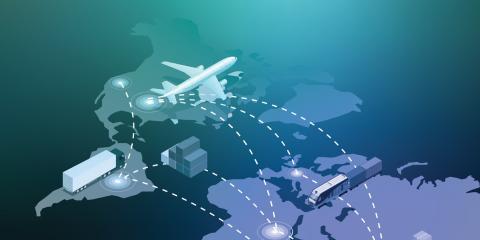
Celebrating World Trade Month, May 2024!
Every May, World Trade Month celebrates the power that trade has to unlock new business opportunities, spur innovation, and strengthen the U.S. and global economy. Check out the range of resources and events to support you along your export journey.

The International Trade Administration is led by the Under Secretary of Commerce for International Trade. Learn about ITA’s executive leadership team
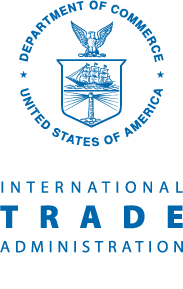
Learn more about who we are and what we do at the International Trade Administration
ITA is organized into three primary business units working to improve the global business environment and help U.S. organizations compete at home and abroad

Learn How To Export
There’s no better time to export than now. Explore our exporting tools and resources to get started!
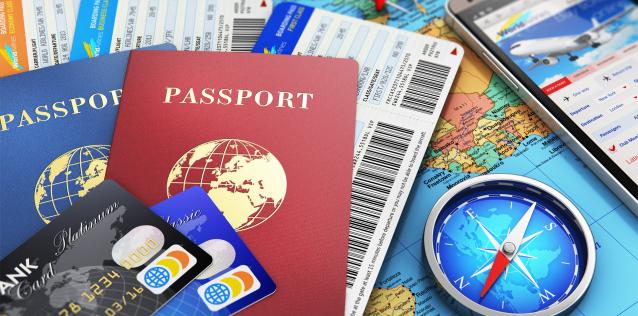
ITA Successes
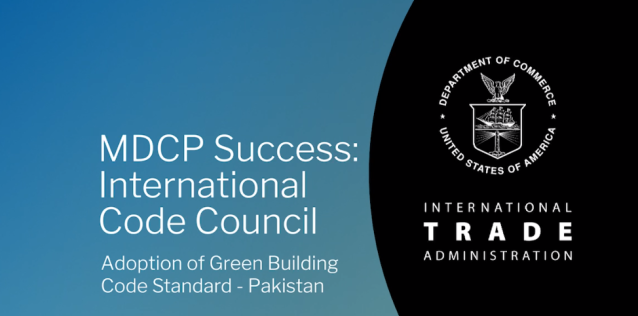
Release of Pakistan Green Building Code boosts US building exports, strengthens industry competitiveness, and promotes safer, greener construction worldwide.

Through networking events hosted by SelectUSA, a unique partnership formed to result in a soon-to-be facility that will manufacture materials for EV batteries.

Selam Global Enterprise worked with ITA’s U.S. Commercial Service to export solar energy systems to Ethiopia.
- Annual Report
- EDPNC Careers
- Invest in EDPNC

- Infrastructure
- Low Cost of Doing Business
- Workforce & Education
- Clean Energy
- Quality of Life
- Network of Executives
- Advanced Manufacturing
- Automotive & EV
- Financial Services & Fintech
- Food & Beverage Manufacturing
- Furniture Manufacturing
- Life Sciences
- Plastics & Chemicals
- Textiles & Nonwovens
- Find a Site Now
- Site Search
- State Comparison Map
- Site Selection FAQs
- Certified Sites
- Explore Regions
- Mountains Region
- Piedmont Region
- Coastal Plain Region
- From Germany
- From the United Kingdom
- From France
- From Israel
Start a Business
- Grow an Existing Business
- NC Business FAQs
- Start Exporting
- STEP Funding Program
- Export Assistance FAQs
- NC Career Resources
Home Get Business Support Start a Business
From entrepreneurs to small businesses, our team of Small Business Advisors connect clients with information they need from state and local resources.
If you have big dreams, you've come to the right place..
Working in partnership with the North Carolina Department of Commerce, Small Business Advisors offers free one-on-one consultations to anyone starting a new business in North Carolina.
Our team can answer your questions and help you navigate topics like regulatory requirements, licensing stipulations, small business training and more. The guidance provided by Small Business Advisors is not intended to replace formal legal or accounting advice.

Business Planning Checklist
Step 1: create a business plan.
Turn your idea into a written, viable plan of action to help you obtain loans and be successful.
Step 2: Decide on a Business Structure
Be sure to carefully consider the management, structural, and tax implications of your decision.
Step 3: Get License Requirements
The state of NC doesn’t issue a single business license, but you may be subject to other requirements.
Step 4: Gather Tax Information
Taxation for small businesses depends on the size and structure of your business.
Step 5: Identify Source of Financing
Discover financial resources available for small business owners in N orth Carolina .
Step 6: Learn Employer Responsibilities
Learn how to register as an employer, for unemployment insurance , and for worker’s compensation insurance.
Small Business Resources

Business Forms
The forms needed to start or register your business in North Carolina are available here.

Sales & Marketing Resources
The ability to sell or promote your products and services is critical to your success. By expanding your markets, diversifying your products and tapping into...

Financing Resources
Finding sources of capital for your business start-up can be confusing and difficult. Here you'll find basic information on the various resources available for individuals...

Federal Programs
Programs offered by the government to help you get your business start and grow your small business.
Contact EDPNC Small Business Advisors
How can we help you, how do i start a business in north carolina.
The EDPNC Small Business Advisors are the go-to resource for starting a business in North Carolina. Using the Business Planning Checklist, you can start a business easily.
Have questions or need help getting started? Connect with one of our Small Business Advisors for a customized consultation, detailed state license information and contacts for the city, county and federal governments appropriate to your business needs. The team in available Monday through Friday between 8:30 am to 4:00 pm at 800.228.8443
Contact Small Business Advisors
How do i acquire a business license or permit.
North Carolina no longer has a state-issued generic business license that will ensure compliance with all requirements. Some businesses may be subject to several state requirements while others may not be subject to any. There are nearly 950 regulatory, state-issued and occupational licenses and permits, 319 occupational licenses, 498 business licenses, and 80 business/occupational licenses. In addition, a local license may be required for your business.
Have questions or need help getting started? Connect with one of our small business advisors for a customized consultation, detailed state license information and contacts for the city, county and federal governments appropriate to your business needs. The team in available Monday through Friday between 8:30 am to 4:00 pm at 800.228.8443
What else should I consider before starting a business in North Carolina?
Here is what you should consider when starting your business:
- Consult with an accountant for bookkeeping and tax purposes.
- Consider obtaining insurance.
- Review contracts with legal counsel.
- Review applicable regulations (OSHA, EPA, Labor, etc.).
- Register trademarks or patents.
- Develop policy and employee handbook.
- Join trade associations and chambers of commerce.
Have questions or need help getting started? Connect with one of our small business advisors for a customized consultation, detailed state license information and contacts for the city, county and federal governments appropriate to your business needs. The team is available Monday – Friday between 8:30 am to 4:00 pm at 800.228.8443.
Need More Help?
Monday-Friday 8:30 am to 4:00 pm.
Email [email protected]
Phone 800.228.8443
By clicking “Accept All Cookies,” you agree to the storing of cookies on your device to enhance site navigation, analyze site usage, and assist in our marketing efforts.
Biden’s China Tariffs Leave Space For Key Solar Machinery (2)
By Jennifer A. Dlouhy

US President Joe Biden ’s plan to hike tariffs on Beijing’s green technology leaves room for companies to avoid duties on solar manufacturing equipment — an exemption that speaks to US reliance on Chinese-made machines to swiftly build out factories, potentially benefitting a small group of niche producers.
While so-called 301 tariffs on solar cells and modules from China will double, from 25% to 50%, the administration is also looking to exclude some machinery altogether in response to pleas from some US manufacturers. They argued tariffs on solar ingot and wafer-making equipment undermined Biden’s goal of establishing a broad domestic ...
Learn more about Bloomberg Law or Log In to keep reading:
Learn about bloomberg law.
AI-powered legal analytics, workflow tools and premium legal & business news.
Already a subscriber?
Log in to keep reading or access research tools.
EU tariffs on Chinese EVs could backfire, German car bosses warn
- Medium Text

- Company Bayerische Motoren Werke AG Follow
- Company Mercedes-Benz Group AG Follow
- Company Volkswagen AG Follow
Sign up here.
Additional reporting by Philip Blenkinsop. Editing by Jane Merriman
Our Standards: The Thomson Reuters Trust Principles. New Tab , opens new tab

Business Chevron

Walmart to cut jobs at headquarters, relocate others
Walmart Inc announced on Tuesday that it plans to cut hundreds of jobs at its corporate headquarters and relocate a majority of its U.S. and Canada-based remote workforce to three offices, a shift in strategy after initially endorsing virtual work during the pandemic.

- Stand Up for Free Enterprise
How and Why to Plan a Washington, D.C. Fly-in
April 02, 2024
Explore more
- Washington Fly-In Program
Why should my organization plan a fly-in trip to Washington, D.C.?
The main purpose of a fly-in trip to the nation’s capital is to bring business advocates from your city or state for meetings with legislators and policymakers about issues that are important to the local business community. These trips provide an opportunity for your business leaders to advocate for local, state, and regional issues that are important for business growth and job creation. They can also help business leaders gain access to, and build relationships with, key decision-makers and administration officials.
What are some benefits of planning and attending a fly-in trip?
There are several benefits for both the organization hosting the fly-in, as well as for the attendees.
Benefits for the host organization:
- Advocacy : Fly-in trips provide an opportunity for business leaders to advocate for local, state, regional, and federal issues that are important for business growth and job creation.
- Membership Benefit : Hosting a fly-in is a valuable membership benefit and can be used as a tool to engage prospective new members as well.
- Non - Dues Revenue Opportunity : Many organizations use these trips to generate both sponsorship and attendee revenue.
- Exposure : Fly-in trips help showcase your organization’s advocacy work and can be highlighted on social media and by your local media.
Benefits for the attendees:
- Networking : Fly-in trips can provide business leaders with a platform to network with other business owners and professionals in their community. By attending a fly-in trip with your organization, your attendees can gain access to a network of fellow small business owners, community leaders, government officials, business prospects, and more.
- Learning Opportunities : Fly-in trips provide your attendees with learning opportunities on a variety of topics, such as policy issues, industry trends, and best practices.
- Exposure : Fly-in trips can provide your attendees with exposure to new markets, customers, and partners.
- Access to Key Decision-Makers : A visit to our nation’s capital can help business leaders gain access to key decision-makers and administration officials, including Members of Congress and leaders from federal agencies.
Why should we meet with the U.S. Chamber of Commerce during our fly-in trip?
To support chambers of commerce and trade associations with their fly-in, the U.S. Chamber of Commerce offers the Washington, D.C. Fly-In Program, which provides member organizations with access to top U.S. Chamber policy and advocacy experts for a program tailored specifically to their business priorities.
Any dues-paying member of the U.S. Chamber of Commerce may request a briefing from U.S. Chamber policy and advocacy experts during their fly-in trip.
Our experts can explain important policy issues and answer questions in a relaxed, informal setting to prepare fly-in attendees for meetings with legislators and other key decision-makers. In addition, the U.S. Chamber of Commerce provides business leaders with a platform to network with other business owners and professionals in their community.
What are some tips to make a successful fly-in trip?
- Plan your trip well in advance to ensure that you have enough time to schedule meetings with policymakers and other key decision-makers.
- Determine the purpose of your trip and set goals for what you want to achieve.
- Create an attractive promotional package that includes information about the event, the expected number of attendees, the demographics of the attendees, and the benefits of attending the event.
- Promote your event through social media, email marketing, and other channels. You can also partner with other organizations to help promote your event.
- Engage attendees by providing informative sessions, networking opportunities, and other benefits that will make their experience worthwhile.
- Follow up with attendees after the event to get feedback and determine the success of the trip.
- Stay organized by keeping track of your itinerary, meetings, and other important details to help you plan your next fly-in.
How do I start planning a fly-in trip to Washington, D.C.?
Decide what you want to achieve from your trip. Determine your key advocacy priorities and how you will communicate them with legislators and policymakers.
Once you have determined the purpose of your trip, choose the dates that work best for you. Keep in mind that Washington, D.C. can be crowded during peak tourist season (March to June), and hotel prices can be higher. If you’re planning to meet with your Congressional representatives, check the House and Senate calendars to make sure they’ll be in session.
You can book flights to Washington, D.C. through any major airline or travel website. The city has three airports: Ronald Reagan Washington National Airport (DCA), Washington Dulles International Airport (IAD), and Baltimore/Washington International Thurgood Marshall Airport (BWI).
There are many hotels and other accommodation options in Washington, D.C. You can use travel websites such as Expedia, Booking.com, or TripAdvisor to find the best deals. We also have a separate article detailing our recommendations.
Washington, D.C. has many attractions and landmarks to explore. You can arrange visits to the National Mall, which includes the Lincoln Memorial, the Washington Monument, and the United States Capitol. We also have information on how you can request Congressional and White House meetings and tours .
While in Washington, D.C., your group can use public transportation such as the Metro or the bus system to get around the city. You can also use cabs or ride-sharing services such as Uber or Lyft.
Washington, D.C. has a humid subtropical climate, with hot summers and cold winters. Make sure to pack clothes that are appropriate for the season and comfortable shoes for walking. Suggested dress code for meetings, dinners, and receptions is business casual.
- Chambers of Commerce
Recommended
- Chambers of Commerce Plan a Washington Fly-in Trip like an Expert Our expert tips to have the best fly-in possible
- Chambers of Commerce Venue, Hotel, and Restaurant Recommendations for Fly-ins
- Chambers of Commerce Booking Tours, Meetings and Speakers for a Fly-in Trip
- Chambers of Commerce Scheduling a U.S. Chamber Policy Briefing
- Chambers of Commerce Recommended Fly-in Trip Materials
View this online

IMAGES
VIDEO
COMMENTS
An international business plan acts as a framework that identifies goals and objectives, specific target markets and clients, resources required and strategies to be developed in pursuit of international business opportunities. The plan allows for the monitoring of progress via metrics against which success and failure can be measured. A comprehensive international business plan will be ...
Sample Export Plan Completing an international business plan helps you to anticipate future goals, assemble facts, identify constraints and create an action statement. It should set forth specific objectives and implement a timetable and milestones. A strategy for entering or expanding into targeted markets is critical to your success in the global marketplace.
An Export Plan is the first step to international business success. It describes the steps needed for a company to develop global sales. An export plan helps you understand the facts, constraints, and goals around your international effort. Use it to create specific objectives, decide on implementation schedules, and mark milestones of your ...
2. Pick a product to import or export. The next step in starting an import/export business is to find a product or industry you are passionate about and that you think could sell in international ...
The International Trade Hotline can help U.S. small businesses facing barriers in accessing international markets or seeking referrals to SBA and U.S. trade government programs. Discover the small business benefits of U.S. trade agreements and assistance going global. Contact the toll-free trade hotline at 855-722-4877 or reach out by email at ...
Download product. Price. 30,00 €. 30% Discount for the purchase of 2 or more products. The INTERNATIONAL BUSINESS PLAN is a practical guide and template for international market development used by companies, executives, consultants and students that require a practical tool for planning international activities.
The first stage in developing an international business plan is to undertake a preliminary country analysis. Presented below are four separate sections to be completed for collection and analysis of market data and preparation of the plan: (1) Analysis: Cultural Environment; (2) Analysis: Economic; (3) Analysis: Market and Competitors; and (4 ...
Export.gov, the U.S. federal government's export portal, also links to many resources, including the following:. If your business is just getting started, contact your nearest Small Business Development Center (SBDC) or Score representative for help in developing an overall business plan.; If you are an established firm with a record of domestic or overseas sales and are looking to export ...
The key to successful exporting is having a written strategic export plan. This article provides an introduction and sample export plan outline that can be customized for your own use. Start by viewing My Export Plan, the third of three videos in our Get Ready to Export set. The video highlights the essential elements of a solid exporting business plan: identifying your product or service ...
This involves conducting market research to identify which countries or regions hold the greatest potential for your business. You can start by looking at demographic data, economic trends, and consumer behavior in different parts of the world. Of course, you should also delve into the market-specific data. Analyzing the competitive landscape ...
Learn How To Export. Small, medium, and large businesses all have the amazing opportunity to expand internationally, however there are several steps that must be taken to ensure that your company is ready to export. Find out the first steps to take by watching the informative series on export planning called "Get Ready to Export." Export ...
Step 1 - Reasons for going global. To start with it is important to define your reasons for wanting to trade internationally. It could be the perfect next step, but just because someone says it would be a good idea doesn't necessarily mean it is right for your business. So really challenge yourself to understand why you are taking your ...
STEP is a grant program that can reimburse small businesses for costs associated with international market expansion. The costs of international trade training, including U.S. government export-related trainings, may be eligible for SBA STEP grants if approved in advance. Check with your state or territory to see if they participate in STEP and ...
1.1. Internal analysis (company) In order to make the most of your company's strengths and improve your weaknesses, the internationalisation plan begins with an analysis of the competitive capacities of the company in relation to the foreign markets in order to achieve profit maximisation.
Getting Started in International Trade. Follow these seven steps to launch your international trading company: 1. Take care of administrative tasks. These tasks may include some of the following: company formation, insurance, licenses, bank account, line of credit, office and warehouse space, marketing materials, and other tasks.
Trade tools for international sales. Nearly 96% of consumers live outside the United States, and two-thirds of the world's purchasing power is in foreign countries. For additional help, please contact SBA's Office of International Trade Hotline: 855-722-4877 or [email protected].
The typical content of International Business Plan is: At this stage, we identify the best strategy that will help our client to enter each particular foreign market of interest. The examples of international business strategies are exporting, licensing (franchising), joint venture, foreign direct investments, etc.
The Plan will serve as step-by-step guide to lead the company through the process of exporting products and services to international markets. Definition of International business plan: Planning is essential for any business. Before venturing into international markets companies have to draft an International Business Plan as this.
Examples of International Businesses. 1. Apple. Apple Inc., founded by Steve Jobs, Steve Wozniak, and Ronald Wayne in the 1970s, is now considered one of the most influential international companies. Headquartered in the United States, Apple designs, develops, and sells electronics, software, streaming, and online services worldwide.
Blue Business Business Plan Company Gradient Illustration Economy Sea World Transportation Editable in Canva. International trade connects the world. Present your business plan with this template decorated with beautiful landscapes. For Google Slides and PPT.
The policy prioritises ease of doing business through technology and digitalisation to create a favourable environment for Indian business owners. ... This, in turn, will help businesses become more competitive in the international trade market. This year, India's Commerce and Industry Minister, Piyush Goyal, presented the new foreign trade ...
The OECD expects global trade in goods and services to grow by 2.3% this year and 3.3% in 2025 - more than double the 1% growth seen in 2023. The first OECD Economic Outlook in 2024, published in April, expects falling inflation will enable central banks to start lowering interest rates, but adds that real rates are likely to remain "above ...
This Business English ESL lesson plan on international trade has been designed for business professionals or other adults and young adults at an intermediate (B1/B2) to advanced (C1/C2) level and should last around 45 to 60 minutes for one student. International trade is one of the principle driving forces of globalisation and the global ...
The International Trade Administration, U.S. Department of Commerce, manages this global trade site to provide access to ITA information on promoting trade and investment, strengthening the competitiveness of U.S. industry, and ensuring fair trade and compliance with trade laws and agreements. External links to other Internet sites should not be construed as an endorsement of the views or ...
Connect with one of our Small Business Advisors for a customized consultation, detailed state license information and contacts for the city, county and federal governments appropriate to your business needs. The team in available Monday through Friday between 8:30 am to 4:00 pm at 800.228.8443. Contact Small Business Advisors.
Bloomberg News. President Joe Biden 's plan to hike tariffs on a broad range of Chinese imports takes a nuanced approach to solar equipment from the country. While so-called 301 tariffs on solar cells and modules from China will double, from 25% to 50%, the administration is also looking to exclude some key equipment from the duties altogether.
Business Press Release T-Mobile Delivers Industry-Leading Customer, Service Revenue and Profitability Growth in Q1 2024, and Raises 2024 Guidance April 25, 2024 | 13 min read
Oliver Zipse, CEO of BMW, visits the Beijing International Automotive Exhibition, or Auto China 2024, in Beijing, China, April 25, 2024. REUTERS/Tingshu Wang/File Photo Purchase Licensing Rights
Advocacy: Fly-in trips provide an opportunity for business leaders to advocate for local, state, regional, and federal issues that are important for business growth and job creation. Membership Benefit: Hosting a fly-in is a valuable membership benefit and can be used as a tool to engage prospective new members as well.